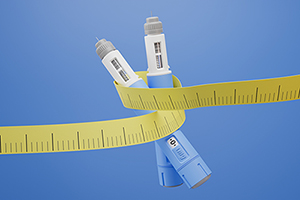



| By Dr. David Perlmutter
Migraine headaches represent a serious health issue in America today, and the statistics are staggering. As many as 13% of adults experience migraine headaches, and as many as 5 million experience at least one migraine attack each month. In fact, more than 90% of people who have a migraine headache are completely unable to function normally during such an episode. They experience symptoms far worse than those associated with the common migraine headache, such as pain, light sensitivity, nausea, and vomiting.
 Genetic and environmental factors both play an important role in the frequency and severity of migraine headaches. For instance, migraines are more common in women, and more than 70% of migraine patients have a family history of the disorder. A full 25% of patients with migraine headaches have one or more migraines each week! The standard approach of many healthcare practitioners to migraine headaches is typically two-pronged: drugs are prescribed to reduce migraine frequency and to provide immediate relief during an episode. But before prescription drugs are utilized, I think it’s useful to take a step back and ask an important question: what could be increasing the risk that any particular person would suffer from these debilitating headaches?
Genetic and environmental factors both play an important role in the frequency and severity of migraine headaches. For instance, migraines are more common in women, and more than 70% of migraine patients have a family history of the disorder. A full 25% of patients with migraine headaches have one or more migraines each week! The standard approach of many healthcare practitioners to migraine headaches is typically two-pronged: drugs are prescribed to reduce migraine frequency and to provide immediate relief during an episode. But before prescription drugs are utilized, I think it’s useful to take a step back and ask an important question: what could be increasing the risk that any particular person would suffer from these debilitating headaches?
One very common, but frequently overlooked, cause of migraine headaches is low magnesium. Magnesium is involved in hundreds of cellular functions that are very relevant to the discussion of how to prevent and manage migraine headaches. When magnesium levels are low there are significant changes in the release of brain chemicals, called neurotransmitters, that play a pivotal role in the frequency and severity of migraine headaches. In addition, low magnesium levels lead to an increase in the production and release of a chemical called substance P (the “P” stands for pain) which is thought to activate sensory fibers for pain.
There has been quite a bit of research looking at the effectiveness of magnesium supplementation as a natural migraine headache remedy. One study, published in the journal Headache, compared the effect of an oral magnesium supplement to a placebo on a group of women who were experiencing migraine headaches in association with menstruation. The study demonstrated that the group who received the magnesium supplement had a remarkable reduction in number of headache days as well as in the “pain index,” a tool used to quantify how much pain a person experiences.
In a different study, 81 migraine patients were given either an oral magnesium supplement or a placebo. The group receiving magnesium experienced a remarkable 42% reduction in the frequency of migraine headaches. In comparison, the placebo group only experienced a 16% reduction. It is noted, however, that diarrhea occurred in close to 19% of the treatment group participants receiving the magnesium salt. This is certainly not an uncommon occurrence in people taking this form of magnesium.
Many of the common forms of magnesium that are used as supplements are chemically described as being “magnesium salts.” These include things like magnesium sulfate, magnesium citrate, magnesium oxide, and magnesium chloride. While these types of magnesium supplements do improve magnesium levels, they are quite often associated with gastrointestinal side effects like nausea, bloating, and diarrhea. Magnesium that is “chelated,” or bound to an amino acid, is a form that is often much better tolerated. Common forms of chelated magnesium include magnesium aspartate, magnesium lactate, and magnesium arginate.
Migraine headaches are incredibly common in modern society, and the numbers seem to be getting worse with time. Rather than simply looking for pharmaceutical fixes for this pervasive problem, we should ask why migraine headaches occur and then take steps to put out the fire. Low magnesium is certainly one common, but also commonly overlooked, contributor to migraine headaches and is a relatively simple problem to fix. We can absorb magnesium wonderfully when we consume it in its natural state. In other words, simply eating more magnesium-rich foods is an easy way to head off migraine headache symptoms and restore our mineral balance! Foods that are naturally high and magnesium include avocados, beans, fish, nuts and seeds, dark leafy green vegetables, and broccoli.
This article originally appeared on Dr. Perlmutter’s website.
Though we think of declining estrogen as the hallmark of menopause, it's actually common for…

Up to 12 percent of Americans have ulcers at some point in life. Peptic ulcers…
Gallbladder disease is a modern illness. An estimated 20 million Americans have gallbladder disease. The…

New, more powerful weight loss drugs: Drugs like Wegovy, Rybelsus, Ozempic and Mounjaro/Zepbound are revolutionizing…

According to the Lancet, autoimmune disease affects one in ten people globally and it’s now…

This past week we were regaled with headlines like: High levels of niacin may increase…

Leyla Weighs In: The Erosion of Trust in Nutritional Research

Our virtual voicemail is open 24/7, so there's no need to wait to submit your questions for Dr. Hoffman. Leave a message, and you may hear your question featured on the Intelligent Medicine radio program!